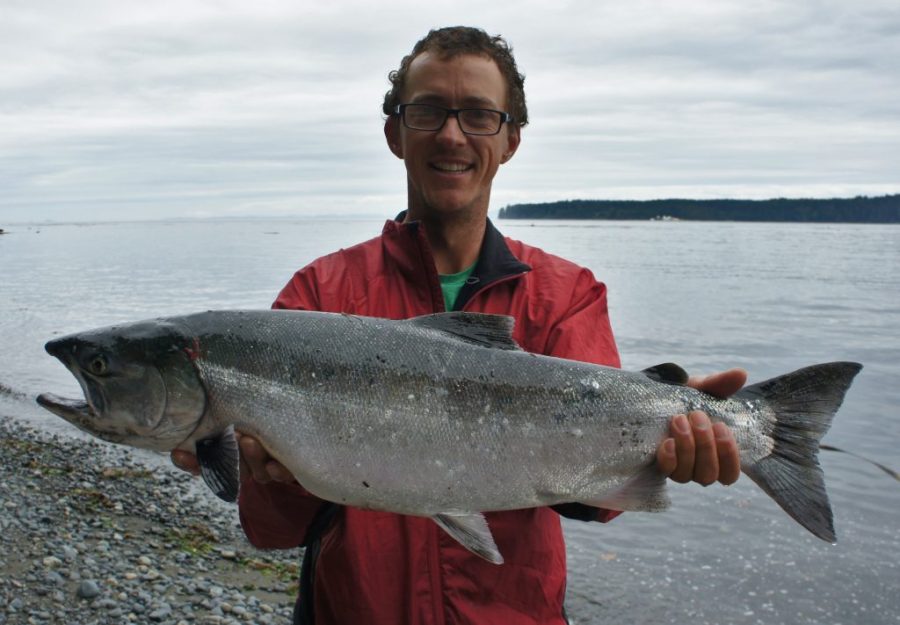This Summer, my partner Amy and I headed over to British Columbia to paddle a section of the Inside Passage. If you’ve not heard of the ‘bucket-list’ worthy Inside Passage, it’s a coastal route that stretches 1700km from Washington, USA, through Western British Columbia, up to Skagway, Alaska. Its major drawcards being the teeming wildlife, a multitude of islands to weave, and the perfect balance of solitude versus opportunities to re-stock in remote First Nations communities.

We had a month to play with, so opted for a 780km section of this marine passage, from Comox on Vancouver Island up to Prince Rupert, in the north-west of British Columbia. We had a brilliant time encountering wildlife, meeting locals, and living the simple life, submersed in stunning scenery. This guide is intended to help you plan your Inside Passage adventure and hopefully provide a few nuggets of inspiration and lessons learnt.

When to go
The climate is quite similar to Scotland, so expect rain and also stunning blue skies. We went mid-August to mid-September and paddled in t-shirts for 90% of the time. The great thing about Aug/Sept is the salmon are starting to run, so lots of Orca, Humpbacks, and the bears should be well fed (fingers crossed).

Where to go
Quick hit – The most compact enjoyment was certainly around Telegraph Cove. There are lots of guided trip options, amazing scenery, and loads of Orca and Humpback to get excited about.
For wildlife – The Broughton Islands certainly offered us the most varied scenery, tides, and wildlife. We saw about 60 Orca on separate occasions, Humpbacks galore, Sea Lions, Sea Otters, Bald Eagles, but no Bears…

Wilderness – The further north we travelled, the fewer people we encountered. Although most of the coast has been logged at some point, north of Vancouver Island thick forest lines the high tide mark with only the occasional small village breaking the vista.

How to get there
Fly to Vancouver and catch either a bus and ferry over to Vancouver Island, or get a floatplane to your starting point from £50 upwards.

Boat hire
We found it surprisingly difficult to hire boats. MEC hire Scorpios from Vancouver City, but then you need to get them to your starting point. Most of the companies in the north of Vancouver Island only do guided trips. The best option we found was from a company called Comox Valley Kayaks. They hire out boats for any duration and provide a drop-off and pick-up service. We met other paddlers on shorter trips who used private boat shuttles to fine-tune their drop-off and pick-up points.

Maps
There are lots of marine charts and topographic maps available of the BC west coast. Depending on the length of your trip I’d recommend marine charts from 1:40,000 scale and smaller. As our trip was quite long and space was at a premium, we opted to use a road atlas for large scale planning and the Viewranger and Navionics apps for our day to day navigation. To charge our devices we had a 17 Watt, waterproof, Voltaic Systems solar panel and battery. This system worked amazingly well, enabling us to charge cameras, phones, VHF and head-torches.

Useful info
There is a ton of useful resources out there to help you plan your paddle. The Inside Passage Facebook Group is a great treasure trove of knowledge. We downloaded the book ‘Kayaking the Inside Passage’ by R.H. Miller onto our phones which offered information on history, tides, wildlife, routes, campsites, and much more. There are various online maps from previous paddling trips, featuring notated information such as campsites, water, and resupply points.

General conditions
We found the paddling relatively straight forward. The majority of the route is sheltered by islands with only a few exposed headlands. The wind offered some challenges but was never a show stopper for us. However, we have heard from other paddlers that it gets much stronger & prohibiting. As a general rule of thumb, you could set your watch by winds picking up at 3 pm in the afternoon. Tides do get pretty strong in areas with overfalls and whirlpools so a good knowledge of tidal planning is vital. Lots of the tidal cruxes need to be paddled at slack water and it was often possible to paddle up tide by hugging the coastline. Landings are found quite regularly and we found many more campsites than recorded online or in Miller’s book. We carried up to 13l of water each and managed to fill up from taps with the back up of water purification means with us if necessary. Bears… We saw one from the water and heard another near camp whilst in our tent. Cook away from your tent spot where possible. Store all smellies in your hatches, seal them and flip your boat overnight. Get studious and read up on bear-safe camping. Again, not a show stopper, but we have heard of trips earlier in the year with a greater number of sightings & encounters.

This area really is a sea kayaker’s paradise, with something for everyone. If you are thinking about a trip out there, do it! Give me a shout if you would like to chat more about it, and happy paddling.
















